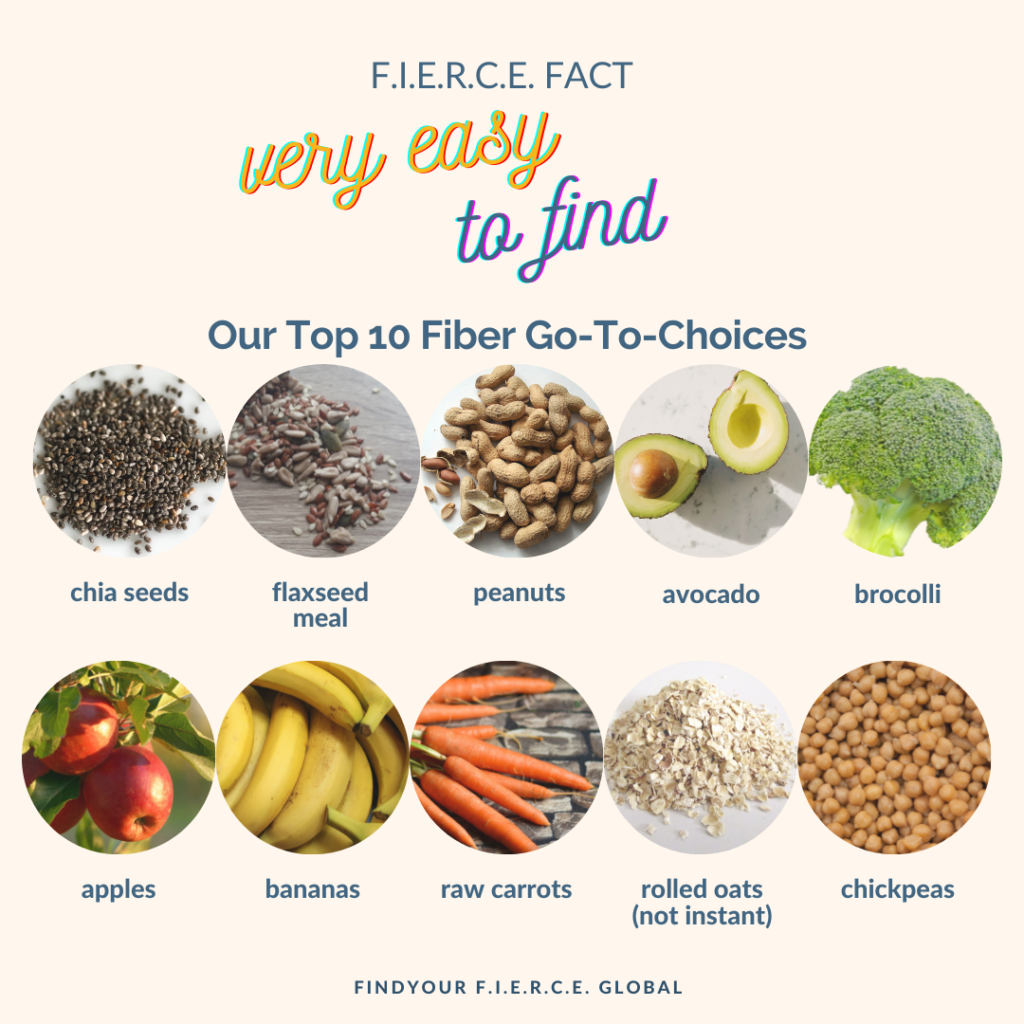You’ve heard us say that fiber is one of our daily food needs to lower cholesterol, keep our digestive health, and weight management. But have you ever wondered what exactly are the top sources of fiber? And how much of it should we have?
There are conflicting views on which are actually the best sources, but coaches Mia and Bunny share with you their top sources based on availability (in the market), benefits, and ease of use in their daily meals. For an adult female, it’s recommended to consume 25grams of fiber a day, 38grams for men.

Our Top 10 List
- Chia Seeds – 34.4gms of fiber / 100gms (check out Coach Mia’s Chia Seed Bowl recipe)
- Flaxseed meal – 6gms of fiber per 2 Tbsp, or 20gms
- Peanuts – 8.5gms / 100gms
- Avocado – 10gms / cup
- Brocolli – 2.4gms/cup
- Apples – 4.4gms / cup
- Bananas – 3gms/ medium-size
- Carrots – 3.6gms/ cup
- Oats – 16.5 gms/cup (check out why we love rolled oats and our baked oats recipe)
- Chickpeas (or Garbanzo beans) – 12.5gms / cup, cooked
Our Tips on How to Eat More Fiber in a Day
Coach Bunny’s approach to eating more fiber: Have as much as you can first meal in the day. Because it helps with bowel movement the next day. It also keeps hunger at bay and reduces the urge to snack between meals.
Coach Bunny’s breakfast bowls are loaded with as much as 9-11 different types of plant-based food. She builds her breakfast bowls with:
- 1/4 to 1/3 Cup of whole grains – rolled oats (never instant or quick-cooking oats), or home-made granola, cooked unflavored quinoa
- 1 tbsp of 2-types of nuts and/or seeds – peanuts, cashews, almonds, walnuts, chia seeds, (ground) flax seeds, sesame seeds, pumpkin or squash seeds, sunflower seeds, edamame
- 1 tbsp of dried berries or coconut – dried goji berries have better anti-oxidants versus raisins, chopped dates
- a small handful of 2-3 types of fresh or frozen fruit (not canned) – preferably have some berry-types alongside local fruits. These could be strawberries, bananas, blueberries, raspberries, papaya, pineapples, apples, orange, cape gooseberries (Ciplukan in Bahasa Indonesia), Water apples (Macopa/Tambis/Djambu).
- 1 tbsp of 100% / All-Nut butter, usually a coarse blend to maintain good fibers from the nuts, no sugar, no salt added
- She pours in her protein smoothie, which is usually blended with 1-2 types of plant-based ingredients like spinach or kale, berries, lemon slice, frozen peas. The Protein smoothie also has powdered fiber blitzed into it. Coach Bunny personally uses Lifiber, for its great taste, on a daily basis. It contains 5.6 grams of fiber per scoop.
Coach Mia’s Tips with adding fiber? Here’s her past video that’s very relevant to this topic.
She shares her personal journey into better nutrition with fiber in this article.
If you’re looking for ways to add more fiber into your diet and have sustainable health habits, yet still enjoy the foods you eat, schedule a call with us to find out how our FIERCE Program can help you start.
References:
- 22 High-Fiber Foods You Should Eat. Healthline 2020.
- Dietary Fiber, British Nutrition Foundation, 2018
- Featured Graphic Image by RawPixel (www.rawpixel.com)
